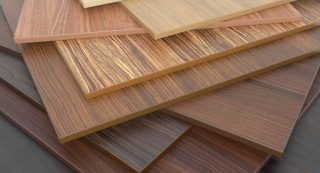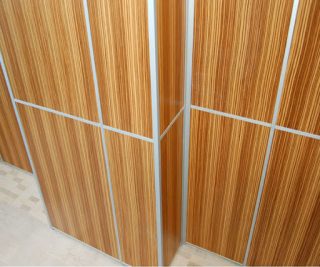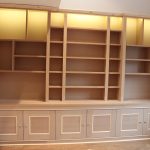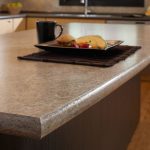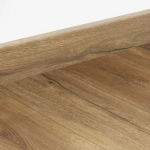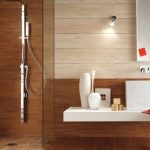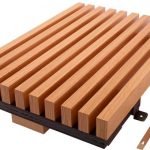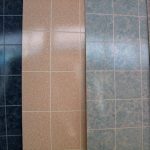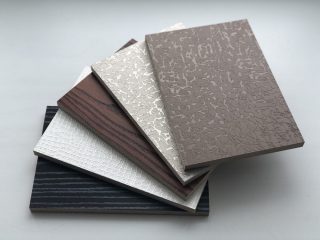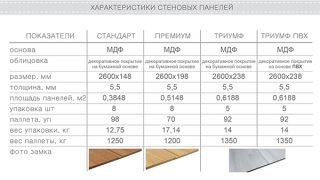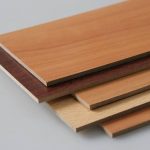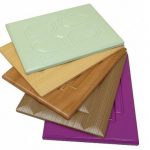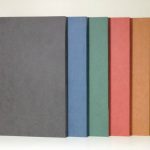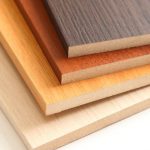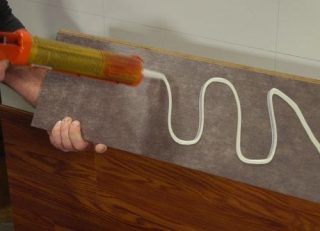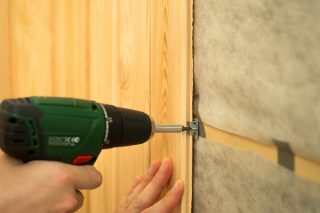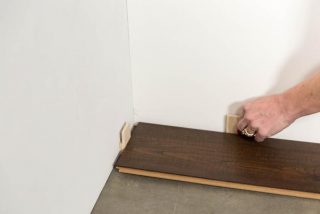The construction industry uses materials that replace natural wood, such as fine fiber MDF. It is used for various types of finishes in the construction of new buildings and the renovation of existing ones. Wood fiber panels are made using a special technology, as a result of which environmentally friendly products are obtained.
Description and characteristics of MDF panels
For manufacturing take wood containing lignin - the walls of stiff cells consist of it. The component melts under the influence of high temperature and pressure, and holds the wood strands together.
Features of MDF:
- in production, formaldehyde resins are not used as a binder;
- the material is given biostability, fire resistance, with the help of various modifiers.
Products are classified as acceptable materials for use in homes, offices and other public areas.
Decoding what it consists of
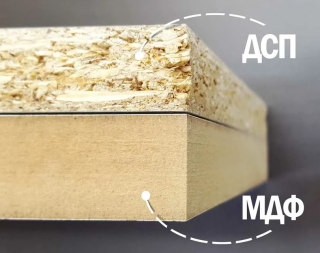
Make material from wood waste (sawdust, wood chips, shavings) ground to the degree of fibers.
Besides the structure contains:
- urea in combination with melamine, which reduces the rate of release of harmful components, a complex substance serves as a supplement or substitute for lignin;
- additives to increase moisture resistance, strength.
Decoding MDF: fine fraction (Medium Density Fiberboard). In terms of environmental friendliness, the material is classified as emission class E1, when 100 g of dry composition should contain no more than 8 mg of formaldehyde.
Production
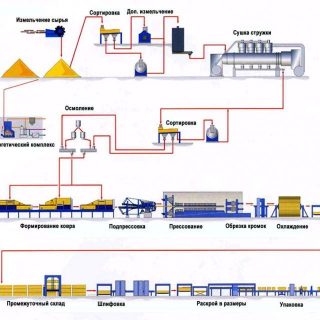
Processes similar to the technology of particleboard, fiberboard production, but there are some features that give the material improved characteristics.
Manufacturing includes the following stages:
- waste is cleaned of impurities, debris, sand, washed with water, dried with steam;
- the second process includes the preparation of fibers in a refiner by grinding, the particles are bound by sticky lignin, a homogeneous mass is obtained;
- air is removed from the dough using cyclones, then it is fed to the production line;
- the mass is made in the form of a carpet on the molding equipment, leveled;
- the obtained semi-finished products are weighed, pre-pressed, finally squeezing out air bubbles;
- the workpieces are fed to the main press, from which a strip ready for cutting comes out.
After cooling, the sheets are polished, sent to the consumer or to the workshop for further finishing, painting.
Applications
Application options for MDF panels:
- the material is taken for wall cladding, ceilings are hemmed with it;
- panels made of finely dispersed fraction are used for the production of kitchen and other cabinet furniture;
- they are used to make tabletops, window sills, slopes, fillings for interior doors;
- products with laminated film are installed as flooring;
- for finishing the bathroom, panels are used that are laminated on both sides, while the ends must be protected with a plastic strip or painted.
Finely dispersed slabs are milled, curved holes are cut in them. The material is used for the manufacture of cases for acoustic devices. Sometimes the panels are used for packaging and packaging.
Varieties of panels
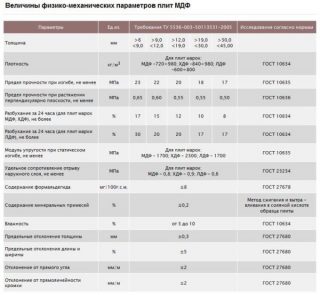
Each type of material has its own characteristics, which depend on the density, the structure of the drawing, the binder component. Moisture resistance is also manifested in all species to varying degrees.
The main indicators of MDF boards:
- when immersed in water for a day, the panel increases in thickness by 10 - 17%;
- the bending strength of products is 18 - 23 N / mm², the breaking limit is 0.55 - 0.65 N / mm², the modulus of elasticity, depending on the type, is 2100 - 2700 N / mm².
The density of the material is in the range of 780 ± 20 kg / m³. Produce sheets of LDF, which are characterized by low density (200 - 600 kg / m³). Material marked with NDF has an increased rate (over 800 kg / m³).
Forms of issue
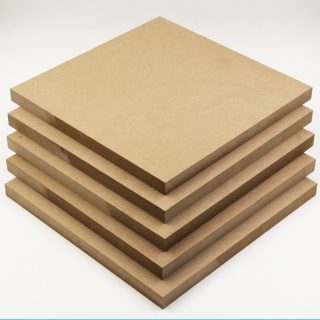
For ease of use, products are produced in a standard format or products have other dimensions in length and width. The thickness of MDF also differs depending on the intended use.
The main forms of release:
- Rack and pinion. The length of the strips (2 - 3 m) is much greater than the width (0.15 - 0.25 m), the thickness is 3 - 9 mm. The slats are equipped with locks protruding 5 cm along the edges to ensure a tight connection of the elements. The strips are fixed to the frame with self-tapping screws.
- Tiled. Presented by rectangular or square elements. The largest size is 1.0 x 1.0 m. Placed on a crate or glue.
- Leafy. They differ in the speed of installation, a small number of cuts. Used for furniture and wall coverings.
Kronospan - these are slabs of increased density for floors, walls, countertops. The material is characterized by impact and abrasion resistance.
Types of decorative panels
Models release with 3D effect, photo printing... Panels produce imitation glassto visually raise the ceiling, there are products for metal, with openwork ornaments. Painted slabs look bright, manufacturers use rich colors.
Dimensions and thickness
MDF boards are easy to use, since tolerances from standard sizes small:
- in thickness - no more than 0.2 mm;
- in length - no more than 5 mm;
- in width - no more than 2 mm.
When connected, the difference in thickness is imperceptible, so a flat plane is obtained. The sizes are universal, they do not differ from different manufacturers.
Surface finishing of sheets
They produce flat plates with a pattern, embossed with a volumetric structural surface. The standard format is for sanding the surface without finishing.
Various types of decorative material are applied to the panels:
- laminated film (by melting thermosetting polymers);
- PVC film coating (by gluing);
- a layer of paint with decorative and protective compounds, varnishing;
- a layer of thin veneer of natural wood.
Depending on the outer layer, the properties and technical characteristics of finely dispersed products change. For example, veneered ones are used for furniture, they are used to finish floors, and laminated ones are used in damp and damp rooms.
MDF installation
The installation method depends on the form of release. Rack and sheet type is installed on the crate, slab for the floor is often fixed with glue. Leaf varieties as flooring are mounted on the frame, or glued to the base.
On glue
Features of preparation:
- irregularities should not exceed 1 - 1.5 cm in height;
- the surface is treated with a primer.
The glue method involves the temporary fixation of sheets with self-tapping screws so that the products do not move during the hardening of the composition. The joints and holes are then sealed with putty.
The method is simple, but large sheets are not easy to mount. After the glue dries, it is impossible to disassemble the coating while maintaining the integrity of the material.
On the frame
Features of the method:
- it is possible to install insulation, waterproofing and noise insulation in the space of the frame
- no need to level the wall with repair mortar;
- in between, they hide wiring, ventilation boxes, water supply and sewage pipes.
The method is good because during the repair the sheets, slats or plates are removed to replace the damaged element.
On the floor
Installation order:
- level the base;
- the plates are placed with an interval of 2 - 4 mm from the walls;
- during installation, the transverse seams should not coincide;
- a compensation gap of 2 - 3 mm is left between the panels;
- the fasteners are fixed to the base along the perimeter of the sheet after 15 - 20 cm, in the center they make a step of 20 - 25 cm.
The joints after the final fastening are sealed with a moisture-resistant putty. The surface is polished for painting. The base can be used as a base for laminate, linoleum, carpet.
Care and maintenance
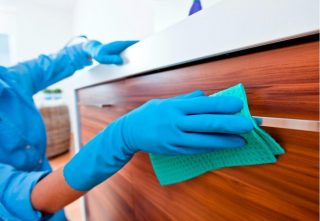
So that the color and shine do not disappear after 2 - 3 years, the rules for cleaning surfaces must be observed. Do not use abrasive detergents. Such drugs contribute to the appearance of a network of scratches. Small defects are indistinguishable individually, but together lead to tarnishing.
Acids, alkalis, chlorides, sodium cleaning preparations do not work better - before use, you need to study the composition. Do not use hard brooms, brushes, scrapers. A steam cleaner will also ruin the surface. Make sure that no water accumulates in the seams during wet cleaning.

